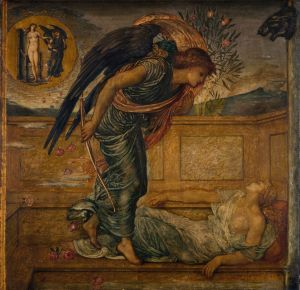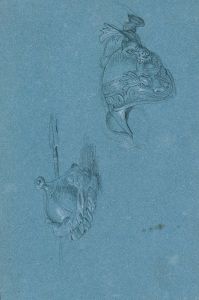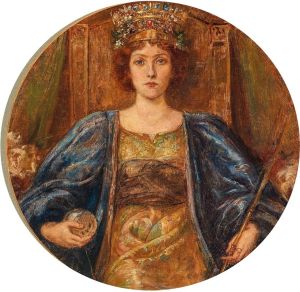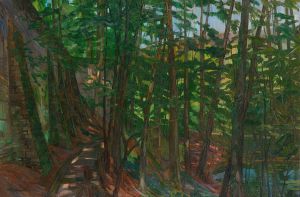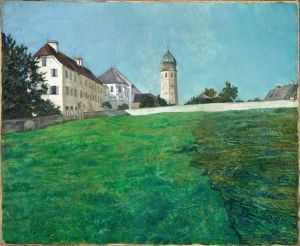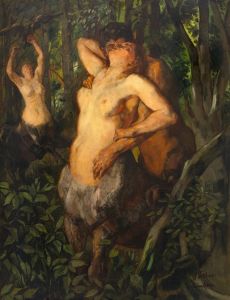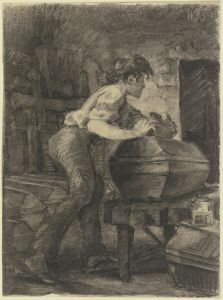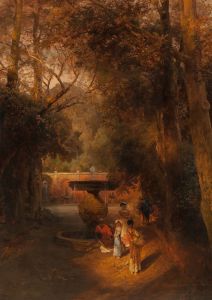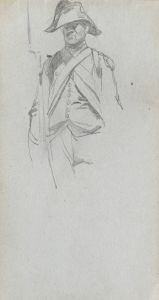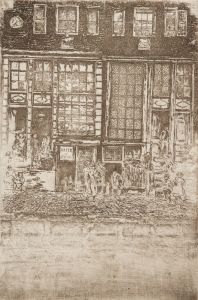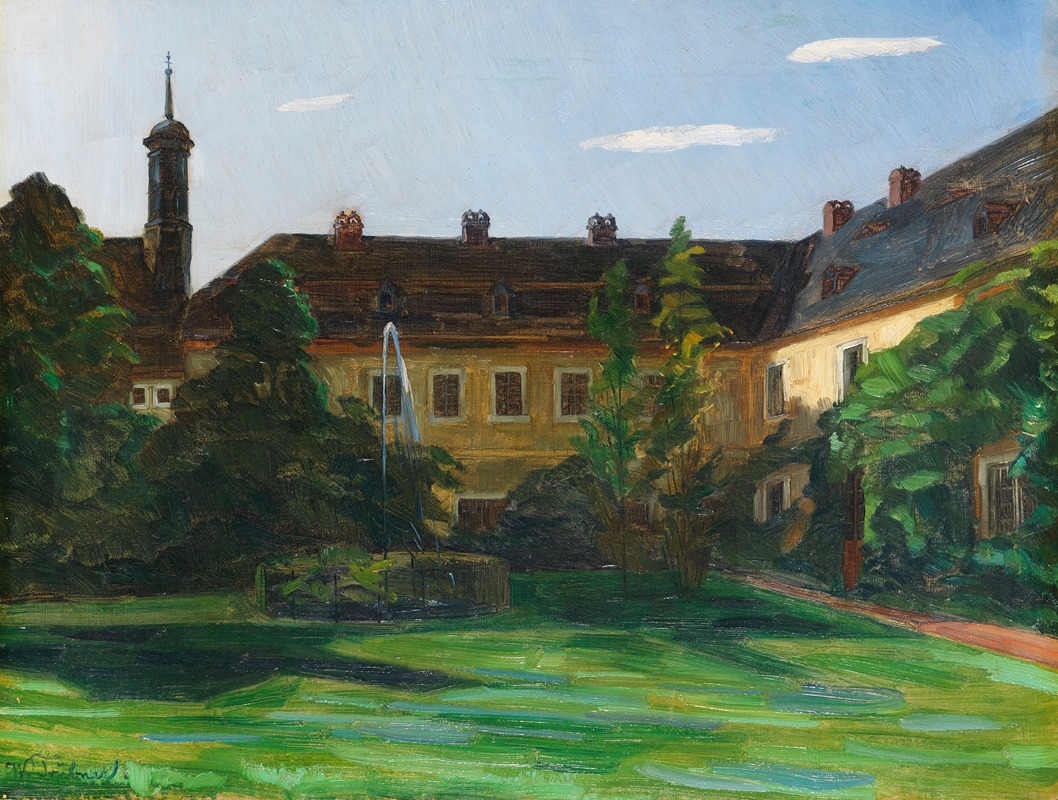
Hof im Stift Neuburg mit Springbrunnen II
A hand-painted replica of Wilhelm Trübner’s masterpiece Hof im Stift Neuburg mit Springbrunnen II, meticulously crafted by professional artists to capture the true essence of the original. Each piece is created with museum-quality canvas and rare mineral pigments, carefully painted by experienced artists with delicate brushstrokes and rich, layered colors to perfectly recreate the texture of the original artwork. Unlike machine-printed reproductions, this hand-painted version brings the painting to life, infused with the artist’s emotions and skill in every stroke. Whether for personal collection or home decoration, it instantly elevates the artistic atmosphere of any space.
Wilhelm Trübner's painting Hof im Stift Neuburg mit Springbrunnen II (Courtyard in the Neuburg Monastery with Fountain II) is a work by the German realist painter, created during the late 19th or early 20th century. Trübner (1851–1917) was a prominent figure in the German realist movement and was known for his detailed and atmospheric depictions of landscapes, interiors, and everyday scenes. His works often reflect a strong influence of the Munich School, where he studied, as well as the broader European realist tradition.
The painting depicts a courtyard within the Neuburg Monastery (Stift Neuburg), located near Heidelberg, Germany. The monastery, originally founded in 1130, has a long history and has served various religious and cultural purposes over the centuries. In Trübner's painting, the focus is on the architectural elements of the courtyard, including a central fountain, which serves as the focal point of the composition. The artist's use of light and shadow, as well as his attention to detail, captures the serene and timeless atmosphere of the monastery grounds.
Trübner's style in this work reflects his mastery of realism, with a particular emphasis on texture and the interplay of natural light. The painting is characterized by its subdued yet rich color palette, which enhances the tranquil mood of the scene. The depiction of the fountain, surrounded by the monastery's historic architecture, suggests a harmonious relationship between human craftsmanship and nature.
While the exact date of the painting is not specified, it is consistent with Trübner's mature period, during which he focused on capturing the essence of his subjects with precision and sensitivity. The painting is one of several works by Trübner that explore similar themes of architecture and landscape, showcasing his ability to find beauty in everyday settings.
The current location of Hof im Stift Neuburg mit Springbrunnen II is not widely documented, and it is unclear whether it resides in a public collection, private ownership, or remains part of an exhibition. Trübner's works, however, are held in various museums and galleries across Germany and Europe, reflecting his significance in the art world of his time.
This painting is an example of Trübner's contribution to the realist movement in Germany and his ability to convey a sense of place and atmosphere through his art. It remains a testament to his skill as a painter and his dedication to capturing the world around him with authenticity and care.





